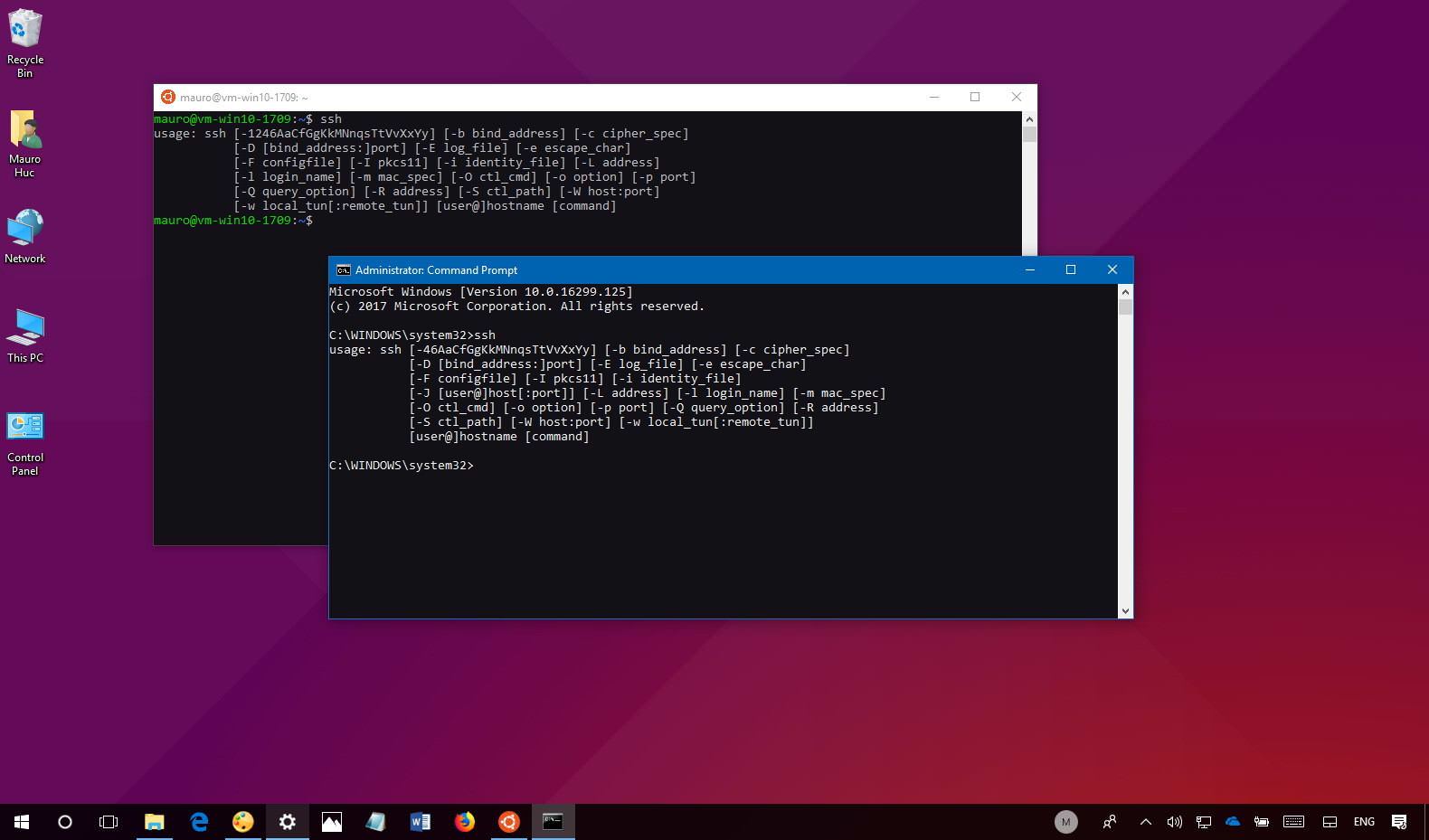- Download File Ssh To Local
- Copy File In Ssh
- Ssh Download File From Server To Local Machine
- Ssh Download File Command
- Ssh File Transfer
- I'm ssh'ing into a linux box which contains some of my work files. I have a local file on my mac which I need to copy onto the server. Here are the steps I've gone through so far: 1) ssh usrname@orgname.edu 2) Entered password 3) pwd 4) working directory: home/usrname. I'm stuck after this. I have a local folder in documents in my mac.
- The question was specifically talking about finding the SSH key when configuring a connection in the FTP program, not how to see hidden files/folders in the windows to transfer between the remote and local computers. The end of your answer at least addresses that, but the start was going down the wrong path. – Luke Stevenson Feb 22 '18 at 0:42.

Whether you are developer, devops guy or a sys admin in charge of multiple servers, you'll always find yourself wanting to move files from one machine to another. It's not an easy feat for first-timers, but it gets easy with a bit of experience.
There are several ways of moving files and directories such as a newly developed website or backup from your local machine to a remote server and vise versa. Different methods use ssh, ftp or http protocol to achieve the same. I prefer SSH method since there's increased level of security while moving your data.
scp
This is probably my favorite when moving files from one box to another. scp using ssh behind the scenes which means you get added encryption whilst moving files.
The general syntax is;
scp from-source to-destination e.gscp [email protected]:/home/dave/file.txt /home/dave/docs
PuTTY Download - Free SSH & Telnet Client. PuTTY is a popular SSH, Telnet, and SFTP client for Windows. It is typically used for remote access to server computers over a network using the SSH protocol. This is the download page. For more information on PuTTY, see the PuTTY page. For information on SSH (Secure Shell), see the here.
If you are copying directory, don't forget to add the -r option.
If you wish to specify ssh port of the remote server, then add the -P option (notice it's uppercase). So if I were copying a directory from remote box whose ssh port is 1234 to my local machine, then that would be;
scp -rP 1234 [email protected]:/home/dave/file.txt /home/dave/docs
You'll be prompted for ssh password eachtime you make the transfer. However, if you setup passwordless ssh, then you won't be prompted everytime.
rsync
rsync is probably my second favorite method of copying files between two computers. It would have been my favorite if it wasn't for some potentially dangerous gotcha newbie might fall for I'll discuss later.
The advantage of rsync over the other options is that is copies only the files/directories that have changed. It doesn't copy the entire directory eachtime you initiate a transfer. Therefore it's best for incremental backups and pushing website or application code changes to production box. It's sort like git but without version control. It's really cool.
Now if you are copying files within the same machine or from an external hard drive to your machine, you could use rsync plainly the way you use cp. e.g
rsync from/source/file to/destination/dir.
But if you wish to copy files from remote pc whose ssh port is 1234, then you cause ssh together with rync to achieve this like this;
rsync -have 'ssh -p 1234' [email protected]:/home/dave/remote-file.txt /home/dave/docs
You can read more about rsync options here but generally the 'have' option means;
-h: output numbers in a human-readable format.
-a: It is a quick way of saying you want recursion. and want to preserve almost everything.
-v: give you information about what files are being transferred and a brief summary at the end.
-e: shell option.
If you are syncing remote directory with local one, then use the same syntax except add a leading slash at the end of directory path of the source directory like this;
rsync -have 'ssh -p 1234' [email protected]:/home/dave/remote-dir/ /home/dave/local-dir
Now the gotcha is if /home/dave/remote-dir/ is empty (for instance you mistakenly use a different empty dir such as /home/dave/remote-empty-dir) and you rsync, it'll empty the destination dir /home/dave/local-dir. So very careful about the ordering of the directories.
ftp
My good-old-friend ftp is still very much used today as it was in the beginning of the internet days. FTP uses plain-text authentication by default, however, today there are ftp implementation that use SSL protocol such as ftps or sftp to add an added layer of protection. I encourage you to use either of them.
Web developers and web hosting companies majorly like to use ftp for file transfer. Devs default to using a multitude of ftp clients to copy files. My favorite ftp client is Filezilla which is pretty awesome, but there are alternatives in the wild such as;
- Coreftp,
- WinSCP
- Transmit (Mac OS X)
- FireFTP (All Platforms with Firefox)
- Cyberduck (Mac OS X).
When you want to copy files from one remote server to another remote one, then you might not have the option of using GUI ftp apps unless you first download to your local machine then re-upload to the destination box. To save time and bandwidth, I use ftp commandline client.
So let me share some ftp commands thanks to awesome guys at cyberciti.biz;
$ ftp my-remote-box.com
ftp> ls
ftp> cd dirName
Task: Download / Copy file
To copy one file at a time from the remote ftp server to the local system use get command:

get fileName
get fileName newFileName
To change directory on your local system, enter:
ftp> lcd /path/to/new/dir
Print local directory:
ftp> lpwd
Task: Download Multiple Files
To download all files, enter:
ftp> mget *
To download all perl files (ending with .pl extension), enter:
ftp> mget *.pl
Task: Upload One File
To copy one file at a time from the local systems to the remote ftp server, enter:
ftp> put fileName
Task: Upload Multiple Files
Upload all files from the current system:
ftp> mput *
ftp> mput *.pl
Task: Create a Directory
To make a new directory, enter:
ftp> mkdir dirName
Task: Delete a Directory
To remove or delete a directory, enter:
ftp> rmdir dirName
Note: recursive copy doesn’t work. Use wget instead like this;
Download File Ssh To Local
wget -m --user='dave' --password='my-secure-password' ftp://ftp.my-remote-box.com/remote-dir.
That will copy remote ftp directory from my-remote-box.com using ftp username dave and password my-secure-password. This really is a pro-tip since unfortunately ftp commandline won't recursively copy directories.
wget
The amazing wget is the download manager that rules them all. Nothing beats wget when you want to copy files from remote box to localhost. The only challenge is that you can't move from localhost to remote though. It's a one-way trip, but an awesome trip nonetheless.
Downloading a file from remote server is as simple as giving wget a link to download.
wget http://my-remote-box/remote-file.txt
To recursively download a directory using wget enter;
wget -r --no-parent http://my-remote-box/remote-dir.
The Parameters mean:
-r //recursive Download
and
--no-parent // Don´t download something from the parent directory
//To download a whole website with wget.wget --random-wait -r -p -e robots=off -U mozilla www.example.com.
You can visit explainshell.com to get a break down of this long command. You can visit labnol.org for more examples on how to use the magic of wget or even gnu.org.
Samba/smb
Copy File In Ssh
Finally we visit our very good-old-friends. Almost as old as FTP and the internet itself. Samba uses the smb/cifs protocol majorly to share files between windows computers and Linux machines. There's a long dirty history there between Microsoft and FOSS community but now things seem to be working out pretty well now that M$ changed strategy in recent years.
Nonetheless, samba is probably your best option of sharing files between a linux server and windows machines withing the same LAN network. It does NOT work over the internet.
After you have setup a samba server which is beyond the scope of this post, you can access remote share in the following ways;
On the windows machine type this at run:
ip-of-the-samba-pcshared.
Take note of the forward slashes.
On Linux/ubuntu machine open file browser and type this at the location bar;
smb://ip-of-the-samba-pc/shared
Take note of the back slashes.
You may also be able to access files by directly specifying their names in the form HOSTSHAREPATHFILE, where HOST is the computer’s NetBIOS name, SHARE is the name of the share, and PATHFILE is the path to the file relative to the share’s root.Take note that while accessing from windows you must use the samba ip or netbios name rather than the samba server domain name self!
NFS
Network File System or NFS is my favorite method for sharing files between two Linux machines on the same LAN. I discovered Samba shares can’t write file name with special characters. Specifically I noticed this while working with email files such as 1451825736.V68I5391eb4M572897.example.com:2,.
NFS works much like Unix File system while Samba works more like Windows.
Usually I mount a remote NFS share on local machine after setting us the NFS server. Once the remote share is mounted locally, it behaves like any other directory on your local machine making copying files really easy.
Git
If you are developer, you probably know about version control and more specifically git. You can use git not just for keeping track of changes to your code, but also to push files to remote server.
When you are done committing changes to your code, you simply git push to an online git-compliant service such as Github, Gitlab, Bitbucket or even your own remote repository. Then on the server where you need the file, you then git pull the code from the remote repository.
netcat and python
You can create a simple webserver using python command for all files in the current directory (and sub-directories) and make them available to anyone on your network. You might have to open firewall rules for particular port you are using but by default the command defaults to port 8000. You can ofcourse restrict access to only particular IPs. I use this trick a lot when a client requests their website or mail files from a server.
python -m SimpleHTTPServer 9000 (for port 9000 and Python 2) and python -m http.server 9000 (for port 9000 and Python 3).
Ssh Download File From Server To Local Machine
I find using python command really simple and easy to remember, but you can use netcat as well.
Ssh Download File Command
//transfer files using netcat
At server-sidenc server.ip 9999 > remote-file.txt or cat hugefile.ext | nc -l -p 9999

At client-sisenc -l -p 9999 < remote-file.txt
So there you have it; 7 ways to transfer files between two remote machines. The options are dependent on whether the machines are on the same network or are connected via the internet, whether they are both of the same OS(Linux) or Windows/Mac and Linux, if security is paramount or not, whether I need a quick dirty solution or if am looking at long-time remote file sharing.
**Quick one folks: For the last 7 months, I have been working on this cool project that automates website uptime monitoring, checks SSL certificate for errors and Expiry, monitors domain expiry and cron jobs. You probably want to keep tabs on these if you are running a website or app in product. So Please Sign up to Site Monki today for free. **
Ssh File Transfer
Image: gcn.com
